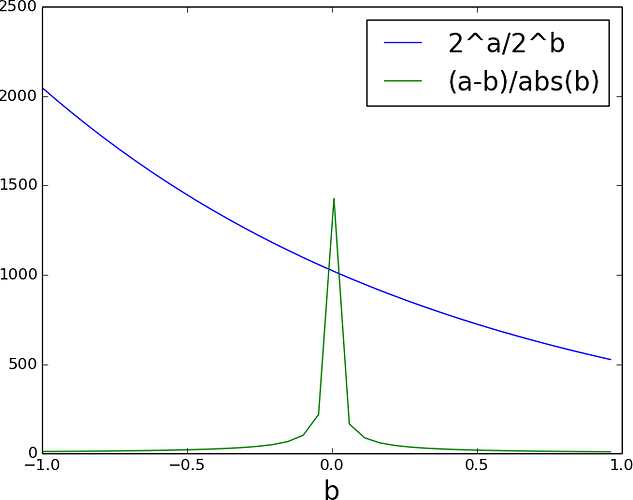Marc,
It wasn’t a challenge. I was curious to see if anyone had had any success with that formula since as of yet I had not.
I didn’t make a feverous statement based on little testing on my part. It was based on testing I had made a number of years ago including in the P123 QCGM ranking system. I also had re-checked a few conditions of the formula yesterday before I made the above post to see if I had a memory error.
The P123 QVGM ranking system has 2 areas in which acceleration is used. It is uses in the EPS node which has 2 sub-nodes; Basic and Acceleration. In the accel node it is used as a short term function; (EPS%ChgPYQ- EPS%ChgTTM)/abs( EPS%ChgTTM), and as a longer term function; ( EPS%ChgTTM- EPS5YCGr%)/abs( EPS5YCGr%). It is also uses in the Sales node as a short term function; (Sales%ChgPYQ- Sales%ChgTTM)/abs( Sales%ChgTTM), and as a long term function; ( Sales%ChgTTM- Sales5YCGr%)/abs( Sales5YCGr%). the Sales node also has a Basic sub-node.
I made a copy of the P123 QCGM Ranking system and changed the weighting of the EPS Acceleration node to 0 and the Basic node to 100 (called QVGM – EPS accel below) So that the EPS node would have the same weight as before, just minus the accel functions. I also made a copy of that copy were I set the Sales, Acceleration mode to 0 and the Sales Basic node to 100 (called QVGM –EPS & Sales accel below).
I then ran a series of tests comparing the 3 ranking systems through various time periods, using various rebalance periods, and number of buckets. So here is what I found today testing the P123 QCGM ranking system and my 2 copies. In the below test results there are no changes except for the ones I stated:
First I set the ranking system performance to 20 buckets, 4 weeks starting in 01/02/99, I use Prussell 3000 so it wouldn’t buy any illiquid stocks. Here are the results in the top bucket:
QVGM = 15.5, QVGM – EPS accel = 15.3, QVGM –EPS & Sales accel = 15.3; so acceleration adds a little performance in this case.
Next I wanted to see the effect in the top bucket using 100 buckets assuming that a sim would buy from the top 1% to replace a sold stock:
QVGM = 18.8, QVGM - EPS accel = 18.1, QVGM –EPS & Sales accel = 19.2; Hum…. EPS accel helps, but Sales accel hurts performance.
Next I wanted to test out of sample as Marc indicated above from 07/15/10 > 04/19/2014;
QVGM = 24.6, QVGM- EPS accel = 24.3, QVGM –EPS & Sales accel = 23.0; so in out of sample, accel adds performance.
Next I started at the beginning of the current bull market 03/09/2009 > 04/19/2014;
QVGM = 25.2, QVGM – EPS accel = 25.2, QVGM –EPS & Sales accel = 26.7; Hum… EPS accel adds no improvement, But again Sales accel hurts performance.
Next I wanted to see the effect of accel during the last recession 10/12/07>03/09/09;
QVGM -49.5, - EPS accel -49.0, QVGM –EPS & Sales accel = -48.6; Hum… accel hurts. That’s counter-intuitive. I would have thought that if it helped anywhere it would be during a recession.
I wanted to check 1 week rebalance during the recession;
1 week QVGM -41.7, - EPS accel -41.2, QVGM –EPS & Sales accel = -41.8; What? EPS accel helps, but sales accel hurts?
Next I wanted to check a 3 month rebalance which showed an improvement for the single factor accel function;
3 months; QVGM = -56.9; QVGM – EPS accel = -56.9, QVGM –EPS & Sales accel = -56.9; No change? I better check that again… yep, no change.
Well how about a 1 week rebalance from the beginning 01/02/1999.
QVGM = 21.2, QVGM – EPS accel = 20.9, QVGM –EPS & Sales accel = 21.0; OK, accel helps a little here.
Ok since accel helps for that case, how about 3 months rebalance.
QVGM = 12.5, QVGM – EPS accel = 12.7, QVGM –EPS & Sales accel = 12.7; What?, I thought accel helped for a single factor ranking system and 3 months rebalance.
What’s the bottom line? Sometimes it helps, sometimes it doesn’t. In either case the difference is not very much.
Does anyone else have an example where there is obvious improvement? It always made sense to me that it should help, but I haven’t found where yet.
Denny 
![]()
